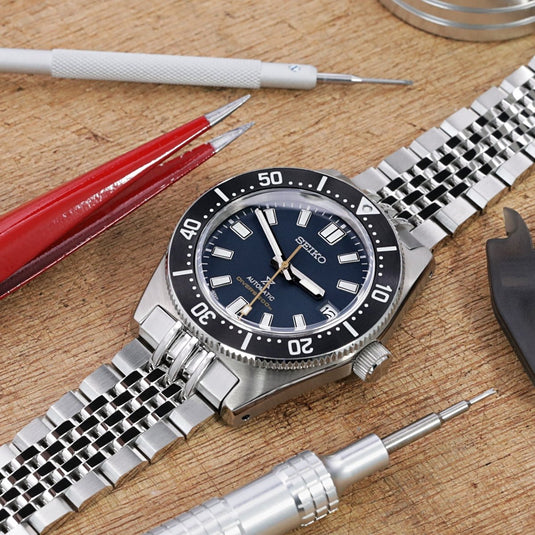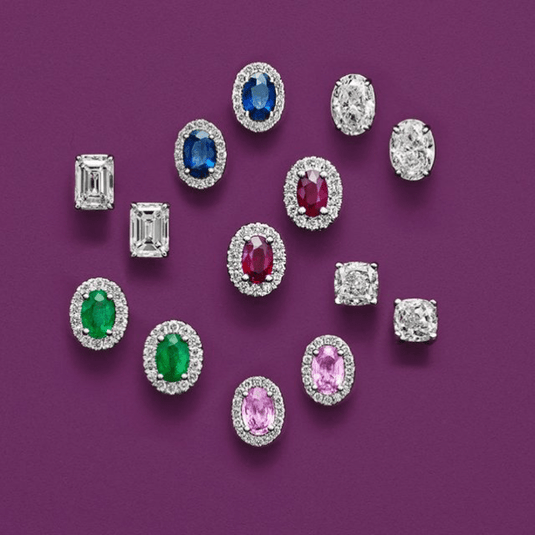When you buy fine jewelry, especially white gold pieces, you may have noticed that they sometimes have a beautiful, reflective shine that seems too perfect to be natural. This finish is likely the result of rhodium plating—a common process used to enhance the appearance and durability of white gold, among other metals. But what exactly is rhodium plating, and why does it wear off over time? In this blog, we’ll take a closer look at rhodium plating, its benefits, and how often you should have your white gold jewelry replated.
What is Rhodium Plating?
Rhodium is a precious metal from the platinum group, known for its striking white color and durability. It is one of the rarest and most expensive metals in the world, which is why it is often used as a thin layer to coat other metals, such as white gold, to enhance their appearance.
White gold, despite its name, isn’t truly white. It is typically made by alloying pure gold with metals like palladium, nickel, or silver, which give it a lighter color. However, these metals can sometimes leave the jewelry with a slightly yellowish or grayish hue. To give white gold jewelry its dazzling, bright, white finish, rhodium plating is applied over the surface.
Rhodium plating not only improves the color of the jewelry but also increases its shine and provides a protective layer that can help guard against scratches, tarnishing, and corrosion. Rhodium, being incredibly reflective, also enhances the brilliance of the stone settings, which is especially noticeable in engagement rings and necklaces.
How Rhodium Plating Works
The rhodium plating process involves electroplating, where a thin layer of rhodium is applied to the surface of the jewelry using an electrical current. The process is fairly straightforward but requires precision to ensure an even coating and optimal shine. The rhodium plating adheres to the jewelry’s surface, giving it a mirror-like finish. While the plating adds a luxurious look, it also provides a layer of protection against the natural wear and tear that comes with daily use.
It’s important to note that rhodium plating is not permanent. Over time, the plating can wear off, especially in high-contact areas like the underside of rings or bracelets. This brings us to the next question: how often do you need to replate your white gold items?
How Often Should White Gold Jewelry Be Replated?
Rhodium plating on white gold jewelry is not a permanent finish. Over time, the plating can start to fade or wear off due to regular use, exposure to oils, lotions, and harsh chemicals. While the exact timeframe can vary depending on how often the jewelry is worn and how well it is cared for, most white gold jewelry pieces will need to be replated every 1 to 3 years.
Several factors affect the longevity of rhodium plating:
- Frequency of Wear: Jewelry that is worn daily, like engagement rings or wedding bands, will experience more friction and exposure to elements, causing the rhodium to wear away faster. If you wear your jewelry only occasionally, the plating may last longer.
- Lifestyle: People with active lifestyles or those who work with their hands may notice their rhodium plating fading more quickly. Constant contact with harsh environments, such as cleaning chemicals, chlorine in swimming pools, or saltwater, can accelerate the wear of the plating.
- Jewelry Type: The area of the jewelry where the rhodium plating is applied also impacts its longevity. Pieces with intricate designs or that have larger surface areas may need more frequent replating than simpler designs with minimal surface contact.
Signs That Your Jewelry Needs Replating
You may notice the following signs that your white gold jewelry is in need of replating:
- Dull or Yellowish Tone: If the jewelry starts to lose its bright white shine and takes on a yellowish or grayish hue, this is a clear indicator that the rhodium plating has worn off.
- Visible Scratches: If the jewelry develops noticeable scratches or marks on the surface, it may have lost its protective rhodium layer, leaving the underlying white gold exposed.
- Faded Shine: Rhodium’s reflective properties are what give white gold its sparkle. If the jewelry looks less shiny or less brilliant, it could be time for a fresh layer of rhodium.
How to Maintain Rhodium-Plated Jewelry
To prolong the life of your rhodium plating, proper care is essential. Here are some tips to keep your jewelry looking its best:
- Avoid harsh chemicals: Remove your jewelry before using cleaning products, swimming in pools, or applying beauty products like lotions or perfumes.
- Clean gently: Use a soft cloth to clean your jewelry rather than abrasive materials, which could scratch the rhodium plating.
- Store properly: Keep your jewelry in a safe, dry place, ideally in a jewelry box or pouch to avoid contact with other items that could cause damage.
Conclusion
Rhodium plating is a valuable and attractive addition to white gold jewelry, giving it a bright, shiny, and durable finish. However, as with any protective coating, it will eventually wear off due to regular wear and tear. Typically, you’ll need to have your white gold jewelry replated every 1 to 3 years, depending on how often it’s worn and how well it’s cared for. By following simple care guidelines, you can extend the life of your rhodium plating and keep your jewelry looking radiant for years to come.



